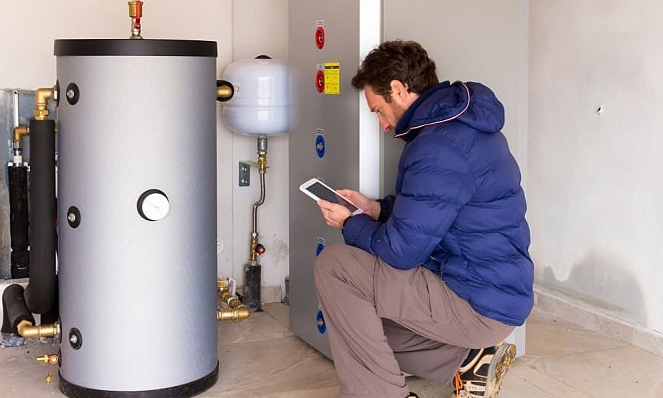Before you decide whether to buy or replace your water heater, you must determine if it operates on 120 volts or 240-volt power. It’s pointless to spend more money on a 240-volt water heater only to discover that your electrical panel can’t handle it. So, let’s look at the differences between 120 and 240-volt water heaters and how to tell if water heater is 120 or 240.
The 240- most domestic electric water heaters use volts. Single element water heaters that run on 120 volts and single element water heaters that run on 240 volts are both available. We can find the voltage rating of your water heater on the label.
If you have an electric water heater problem, you should first check the electricity. Electricity has the potential to kill you. If you’re unsure how to tell if water heater is 120 or 240, and if you are unsure about your ability to work with voltage, see an expert. Breakers are often labeled. However, they can be mislabeled. Before removing the access panels, make sure all breakers are turned off.
Getting to Know Your Water Heater
One of the most common mistakes homeowners make when purchasing an electric water heater is failing to check the amperage. Some heater tanks list the voltage and wattage requirements but not the ampacity.
It’s ideal to ask the shop or the brand maker for your tank’s specifications. The size of the breaker you need depends on the size of your heater. Here are three things to think about to secure your safety:
1 – Voltage
Your boiler’s volts are crucial in maintaining a suitable circuit. Depending on the size and wattage of your tank, you can connect an ordinary heater to a 220 or 240 Volts outlet.
2 – Wattage
Take the wattage demand of your heater into consideration. Knowing the wattage of your device is extremely useful if it uses a lot of electricity due to its tank size and other features. It will assist you in locating a proper breaker to manage the situation.
3 -Wire Size
Finally, it would help if you determined whether the cable type is suitable for the breaker size of your water heater. Incompatible sizes or damaged cables that have been reused can put your heater and breaker at risk.
How to Check the Voltage of Your Water Heater
Around the 20-gallon mark, most tank-type water heaters switch from 120 to 240 volts. However, there are occasional exceptions on both sides of that line, so verify the data plate on the tank’s side. How to tell if water heater is 120 or 240? There’s also the added complication of wiring a 240-volt water heater to a 120-volt circuit, which is doable but not recommended. Because it only produces a fraction of the heat output, recovery is sluggish, but we’ve seen a few of these throughout the years.
As a result, we propose inspecting the electric panel to see if the water heater is installed in one or two slots. A double breaker indicates 240 volts.
1: turn off your water heater’s power
To turn off the power to your water heater, go to your circuit breaker and turn it off. “Hot water heater” or “HWT” is the most common label on the circuit switch.
2: Use a non-contact voltage tester to double-check that the power is turned off.
Look for a clump of wires on the very top of your water heater tank. The voltage tester should be turned on and pressed on the wire for a few seconds. If it beeps, your water heater is still on; if it is silent, the water heater is turned off and is safe to test.
- To ensure your voltage tester is working correctly, test it against a plugged-in cord.
- If the device beeps, check your circuit breaker to see if the correct switch is turned off.
3: Remove the insulation and the access panel
It housed all the wirings in an electric water heater in an insulated access panel covered by a rectangular metal plate. With a screwdriver, remove the access panel, then pull out the insulation covering the wires and terminal screws.
- Some water heaters may not allow you to remove the insulation altogether. Tape it to the side of the heating tank so you can see the wires and terminals.
- The plastic casing may be included on top of the wires and terminals on some water heaters. Before you begin testing, make sure to remove this cover.
4: Reconnect the power to your water heater
You’ll need a consistent flow of power streaming through your equipment to test the voltage of your water heater. Return to your circuit breaker and reactivate the water heater’s power.
5: Use your multimeter to connect the red and black probes
Look for a red aperture labeled “V” (for voltage) and a black port labeled “COM” along the bottom of your multimeter (for every day). The red probe cord should be plugged into the red “V” connector, while the black probe cord should be plugged into the black “COM” port.
6: Change the voltage setting on your multimeter to something higher than 240 volts
Look for the voltage part of readings on your multimeter, which will be indicated with a “V” and a squiggly line. Then set your multimeter to a high voltage setting, such as 600 volts.
- Look at the bottom of your mustimeter to find out how many volts your multimeter can handle. You don’t want to overload your multimeter and end up damaging it!
- Your multimeter won’t be able to accurately register the voltage of your water heater if it’s set to less than 240 volts.
7: Use the multimeter to check the voltage of your water heater
Press the red probe to the topmost screw on one side and the black probe to the topmost screw on the opposite side of the multimeter. It makes no difference which probe is on which screw as long as they all touch distinct terminals.
- Ensure you’re not touching or handling the probes’ metal ends, or you might get shocked.
- Put on a pair of rubber insulating gloves rated for at least 240 volts of shock for added protection. You’ll be safe even if you accidentally touch a live terminal or cable this way.
8: Determine the voltage of your heater using the multimeter screen
In a few moments, the words “120” or “240” will appear on your screen, validating the voltage of your water heater.
- If your gadget does not display a voltage number, it may need to be repaired.
Important Note
Because it has no ground, a 240-volt connection with only 120 volts applied will read 0 volts on your meter. As a result, you must inspect each side using the tank as a reference point. The voltage measurement of a water heater can range from 115 to 120 volts and 230 to 240 volts.
What Are Some Common Errors to Avoid When Checking the Voltage of Your Water Heater?
- Turning off the wrong circuit breaker – Turn off all circuit breakers until you know which one controls the water heater.
- Using a non-functioning multimeter – Always test a meter on a known-working outlet.
- With the power on, remove assess panels and insulation – exposed wiring is immediately behind the insulation.
Water Heater Change: 20 Volt to 120 Volt
Water heaters are big storage tanks that provide your home with hot water. How to tell if water heater is 120 or 240? There are two types of water tanks: natural gas and electricity-powered. Electric water tanks are usually 220-volt, so we must plug them into a 220-volt outlet to function. If the tank is located in an area with only a 120-volt electrical outlet, a step-down transformer will be necessary to convert the higher-voltage heater to one that a 120-volt outlet can supply.
1st Step
Connect the water tank’s connector or wiring to the appropriate receptacle jacks on the step-down transformer’s back side. If a standard plug is not used for connection, loosen and tighten the wires with a screwdriver. Because step-down transformers differ somewhat, read the user manual for yours.
2nd Step
Connect the power cord from the step-down transformer to an electrical outlet on the wall.
3rd Step
Turn the step-down transformer’s power switch to the on position, then turn on the water heater.
In 2022, the Best 120V Water Heater Will Be Available
1 – CK 150-1 Premium Heater by Stiebel Eltron | BUY ON AMAZON
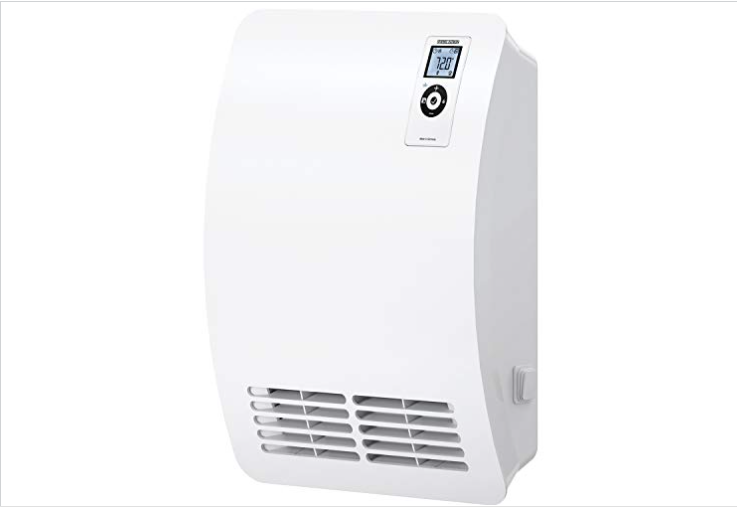
The Stiebel Eltron CK 150-1 is a stylish surface-mount heater that’s ideal for providing rapid heat. This silent fan heater, designed and manufactured in Germany, swiftly warms a space or maintains a suitable temperature. The built-in fan is incredibly quiet in regular operation, emitting only 48 decibels (A), and features a “silent mode” that emits only 37 decibels with reduced power (A). To the touch, the thick aluminum face remains cool. The European downdraft design heats a space evenly and is ideal for retrofit and new construction.
2 – Bosch Mini-Tank Electric Water Heater | BUY ON AMAZON
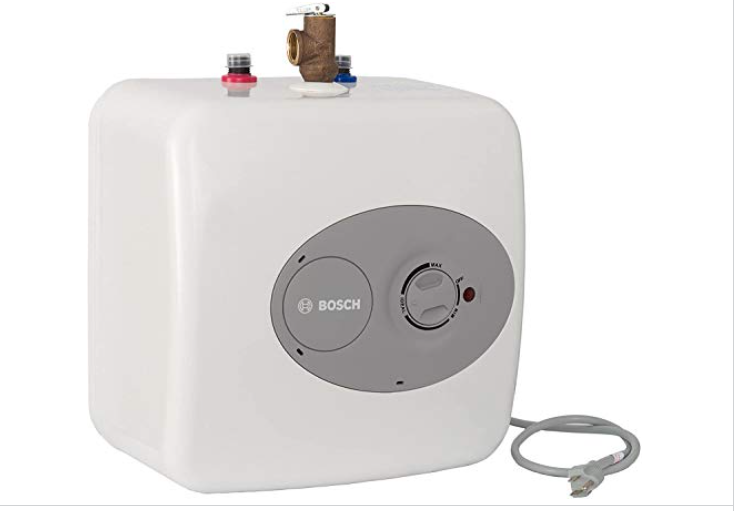
The Bosch Mini-Tank is a compact electric water heater meant to be used at the point of usage. This device can be wall-mounted or neatly tucked beneath a sink. This electric water heater has a two-year components guarantee and a six-year tank warranty, making it ideal for providing hot water in a single location. With the 120volt unit, the Bosch Tronic Mini-Tank Electric Water Heater comes in three sizes: 2.5 gallons, 4 gallons, and 7 gallons. They can use the water heater on its own at a sink or in conjunction with a larger water heater.
In 2022, the Best 240V Water Heater Will Be Available
1 – Rheem RTEX-24 Electric Tankless Water Heater -240V
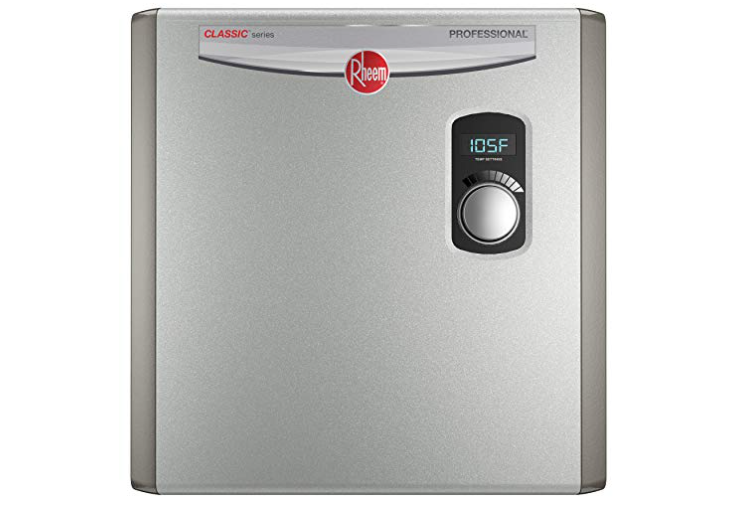
Rheem RTEX-24 Residential 240V 3 Heating Chambers contains almost everything you need in an electric tankless water heater. It features energy-saving technology and exceptional hot water services. It’s powerful enough to provide hot water on demand for single-use, but it’s also trustworthy for multiple uses.
The Rheem 240V 3 Heating Chambers RTEX-24 Residential’s sleek look and excellent efficiency may be its selling qualities, as it provides fantastic performance for houses with multiple family members.
2 – ECO 36 240V Electric Tankless Water Heater by Ecosmart
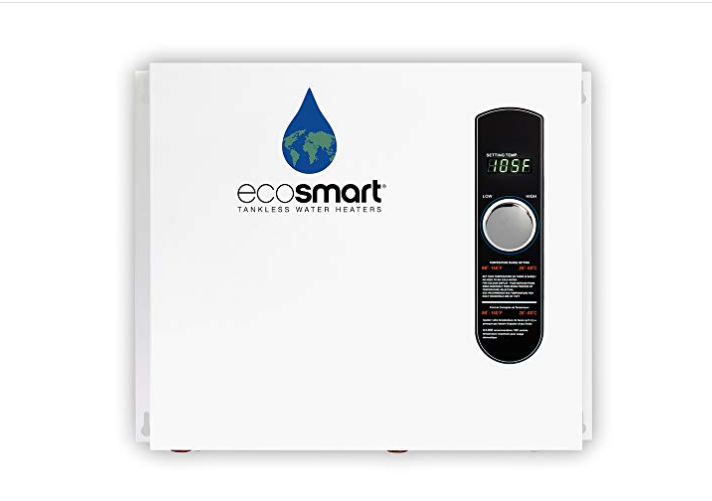
The ECO 36 tankless water heater is designed to handle several kitchens and bathrooms as a “whole home” tankless water heater without breaking a sweat. This means that showers and dishwashers can be used simultaneously without the requirement for heating units at each spout. Control your hot water entirely with the ECO 36. You can make it as hot as 150°F, which is an exact value rather than a range. This isn’t a unit where you can choose between “warm” and “hot” by turning a dial or pulling a lever. Temperature control of water can be controlled to a single degree.
The ECO 36 can also be used as a stand-alone unit. It’s self-modulating, which means it only uses as much energy as you need to heat your water. To put it another way, unlike some heating units, it does not draw a maximum current and then turns off according to your temperature controls. It only uses the energy you require, resulting in significant energy savings on your utility cost.
Is A 240V Water Heater More Energy Efficient Than A 120V Water Heater?
In most cases, there is no difference in efficiency between a 240V and a 120V water heater. A 1500-watt water heater, for example, will cost the same to run, whether it is 120V or 240V. The amperage numbers are one of the reasons why people prefer 240V for water heaters in their homes. The amp is half what it is with a 120V heater at 240V.
Is 120V or 240V The Best Voltage For My Heater?
It’s best to match the voltage of your water heater to the circuit outlet when picking the voltage. As a result, you’ll obtain 100 percent of the heater’s power.
For example, if you wish to use your heater as a plug or on a circuit with outlets, you should choose the 120V option (in the US). However, if you want to hardwire a new circuit from the electrical panel, go with the 240V heater to save on amperage.
Conclusion
Using the improper voltage for your water heater can be dangerous and costly, as it can damage your electrical components or possibly cause a fire in your home. You must know the amperage of your water heater and which standard it complies with – 120 or 240 volts – to establish what voltage you should use. That’s why we’ve put together this guide to show you how to tell if water heater is 120 or 240 and how to use it properly.
Locate the breaker in the electrical panel connected to the thermostat to determine the type of water heater you have. A single breaker switch indicates a 120V water heater, but a twin breaker pole indicates a 240V water heater.
Frequently Asked Questions
A: Knowing whether your electric water heater is 120V or 240V is critical, especially if you need to maintain, repair, or replace it. 240 volts is the standard for most domestic electric water heaters. There are water heaters that run at 120 volts with one element available. We can see the voltage rating of the heater on the label.
A: Because you already know your water heater’s wattage and voltage, all you have to do now is use the Ampere formula, which is I (amps) = P (watts)/ V. (volts). For example, I have a 3,000-watt heater tank that requires 120-volt power. Divide your watts by your volts to find the amperage.
A: A 50-gallon electric water heater uses 4500 watts of power. Four thousand five hundred watts equals 18.75 amps in a 240-volt electric circuit.
A: A new 20- or 30-amp double-pole circuit breaker and new circuit wire to support one or more heater units are typically required when adding a 240-volt baseboard heater.
